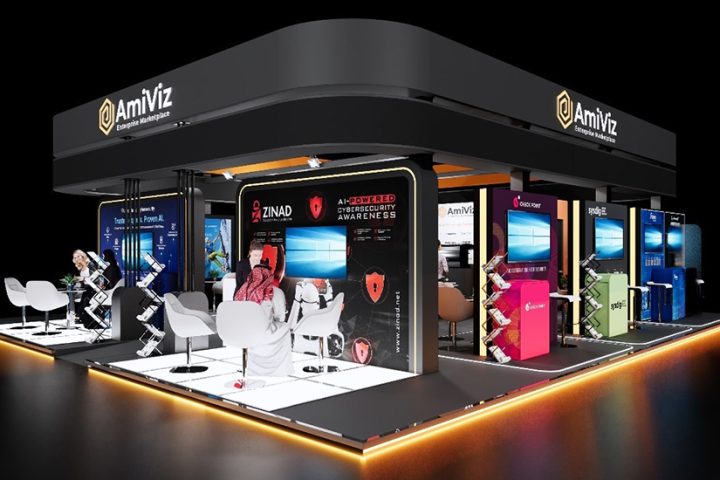The renaissance we are currently experiencing in Artificial Intelligence (AI), and all forms of Machine Learning (ML), has given rise to widespread discussion on how business will run in the immediate future. As the impact of AI starts to be applied to real-world use cases, we will inevitably need to get used to some new terminology. One of the technology industry’s new favorites is the notion of the ‘cobot’, short for collaborative-robot.
Cobots come in many forms. Some will be purely software-based helper robots that we might think of as sophisticated extensions of chatbots or virtual assistants. Some will more physically manifest themselves as robot arms, exoskeletons or some other form of intelligently programmed machinery. Some will be a super-smart mix of both.
Your intelligent new office buddy
You can think of cobots as your new office buddies and people—I do mean all of us―are going to have to get used to working alongside intelligent machines, in close proximity, very soon.
Cobot brains are composed of software-based virtual services that form the synapses of ‘thought’—we know its processing and data analytics really―that they run on. Like a Tamagotchi, they do need feeding and watering, but only in the form of software updates, exposure to new datasets and patches for security provisioning and so on.
People who find the notion of cobots unnerving should perhaps stand back and consider the fact that machines have already been looking after us in close proximity for years. Your desktop machine, tablet and smartphone are all using AI to power the spam filter algorithms that assess every email you get for its potential threat value.
If it helps you warm up to the concept, think of cobots as just one step further than a spam filter. But instead of just protecting you from a potential virus, cobots will be able to intuitively manage your work schedule, actions and business decisions, to create a better employee experience all round.
As DXC Technology’s Marc Wilkinson writes in Wired:
For businesses, the promise of AI is that [intelligent assistants] will be embedded across all aspects of the organization. Such agents will analyse data, discover patterns over time and then make decisions based on predictive analysis. The outcome? The application of AI on this level will make businesses not only more efficient, but also more profitable.
Behavioral responsibility
As shiny and fabulous as all this sounds, there is a responsibility factor to bear in mind here. As we start to feed data into cobot brains, we need to be able to reflect a consciousness of and appreciation for society’s acceptable behavioral norms.
This means that cobots will need to be able to assess the risk factor in terms of the judgements they give to any individual worker based on that person’s skills, background and other competencies. To do this effectively, we will need to be able to assess and measure individual workers’ skills in an even more granular and mathematical way before we start to engineer more automation of this kind into our lives.
Cobots will also need to appreciate cultural, ethical and behavioral norms for the global culture that they are applied in depending on location—and this is of course a subject in and of itself.
Cobots and global digital workflows
As the cobots start to take over the mundane tasks in our world, we must consider how people will now coexist in the new world of automated controls that drive digital workflows and how we actually implement these devices―be they software-based, hardware-based or both—in the workplace.
Some argue that we will now need to be able to measure an individual’s rank or score in terms of workplace competency. If we accept this methodology, then it could arguably help us find the engineering point at which we can apply cobot technology to an individual’s role.
To reference DXC’s Marc Wilkinson again, he notes that really smart cobots that run on fine-tuned ML models will be able to bring a new level of workplace personalization to our daily routines and discover where we could be doing better. He talks about ‘intelligent agents’ that are capable of interpreting emails for us to automatically schedule meetings, flag important tasks and even unsubscribe us from newsfeeds that we never open, and more.
With a cobot as your new office buddy, we can start to think about the workplace itself from a different perspective. We’re all used to open plan office seating layouts these days, but with cobots in the workplace, the software itself will be able to straddle cross-team functionality matrices that far outstrip the boundaries of the physical office itself. For example, team member actions in the UAE can be automatically reflected in plans for the UK or US offices in near real-time. The cobot doesn’t sleep, so a new global digital workflow starts to become possible.
A toast to cobot IPA
With cobot technology now developing fast, we will more clearly be able to understand our transition from RPA to IPA or IRPA. If Robotic Process Automation (RPA) allows us to program home heating controls, for example, based on defined patterns, then Intelligent Robotic Process Automation (IRPA, or just IPA) is one step further, where home heating controls start to program themselves for optimum usage and efficiency based upon observed patterns of use. Cobots have IRPA in their ‘DNA’ from the get-go.
We’re on the cusp of many technologies―perceived today as almost ‘toy like’, such as self-driving cars—becoming quite natural. We will think that cobots and intelligent assistants are quite standard in half a decade’s time. In the same way that you went from reading a map in the car and now automatically turning the GPS on, you get to a point where you just expect a new technology to be there…and cobots will be there.














